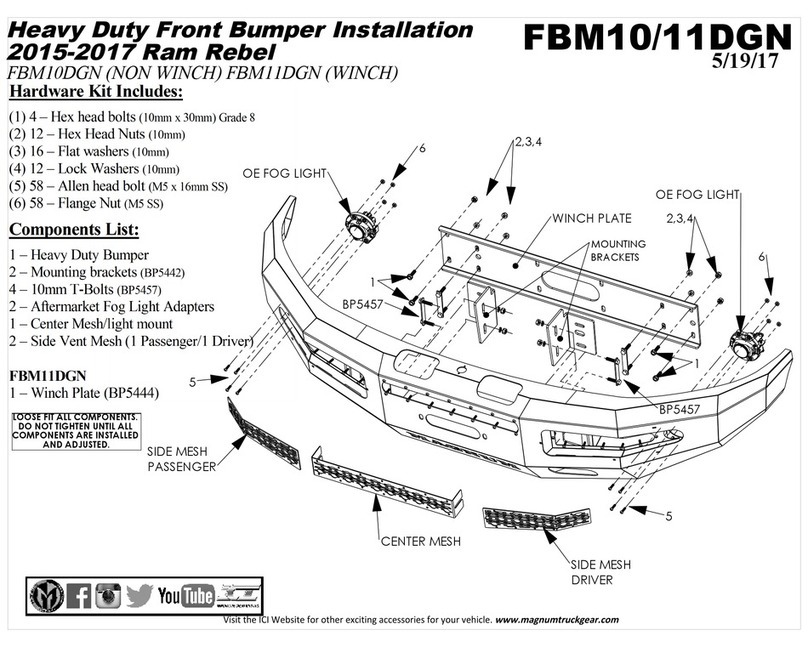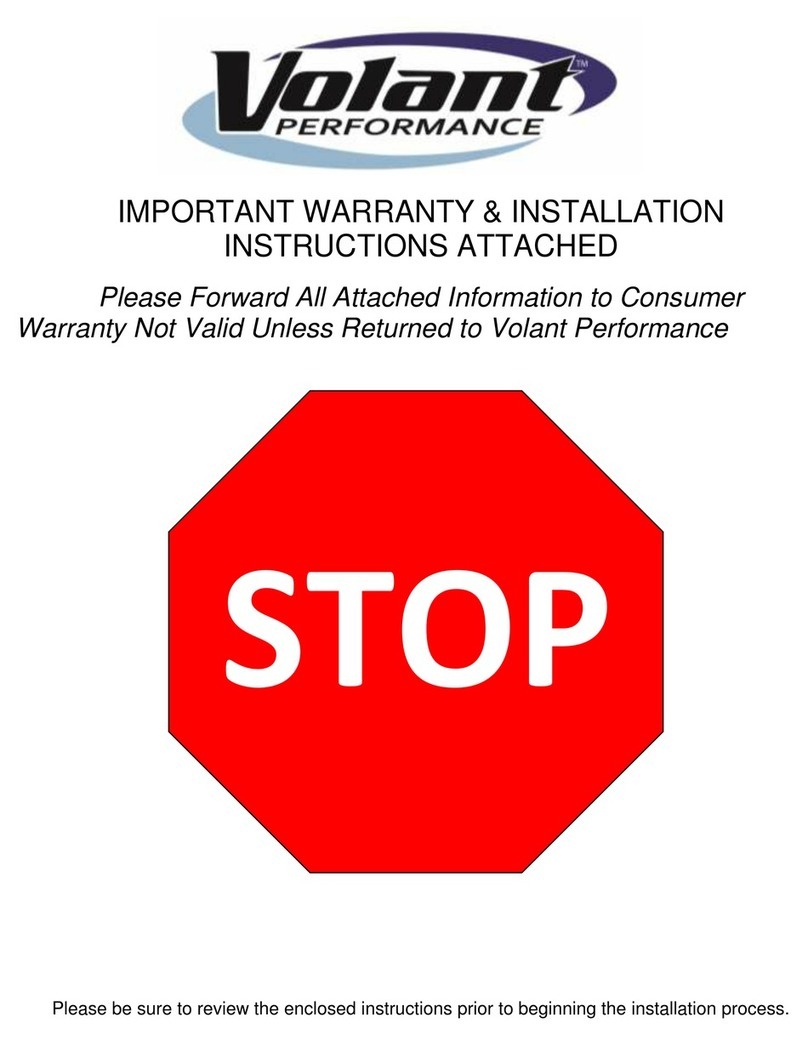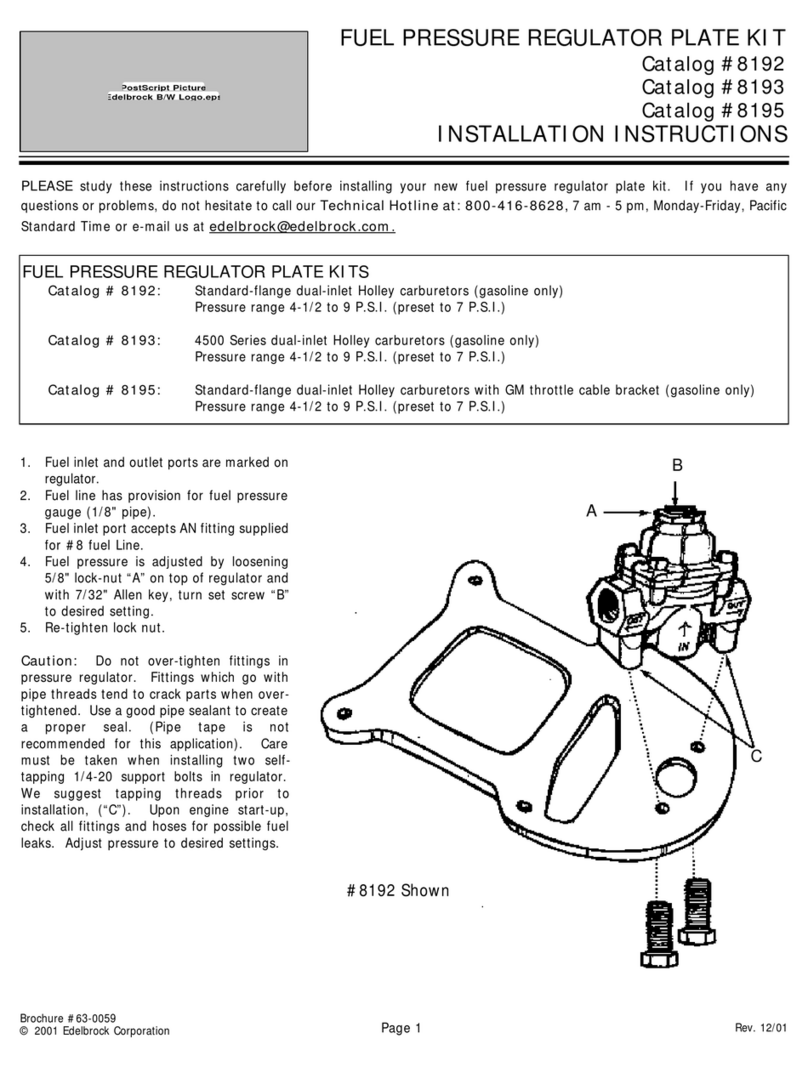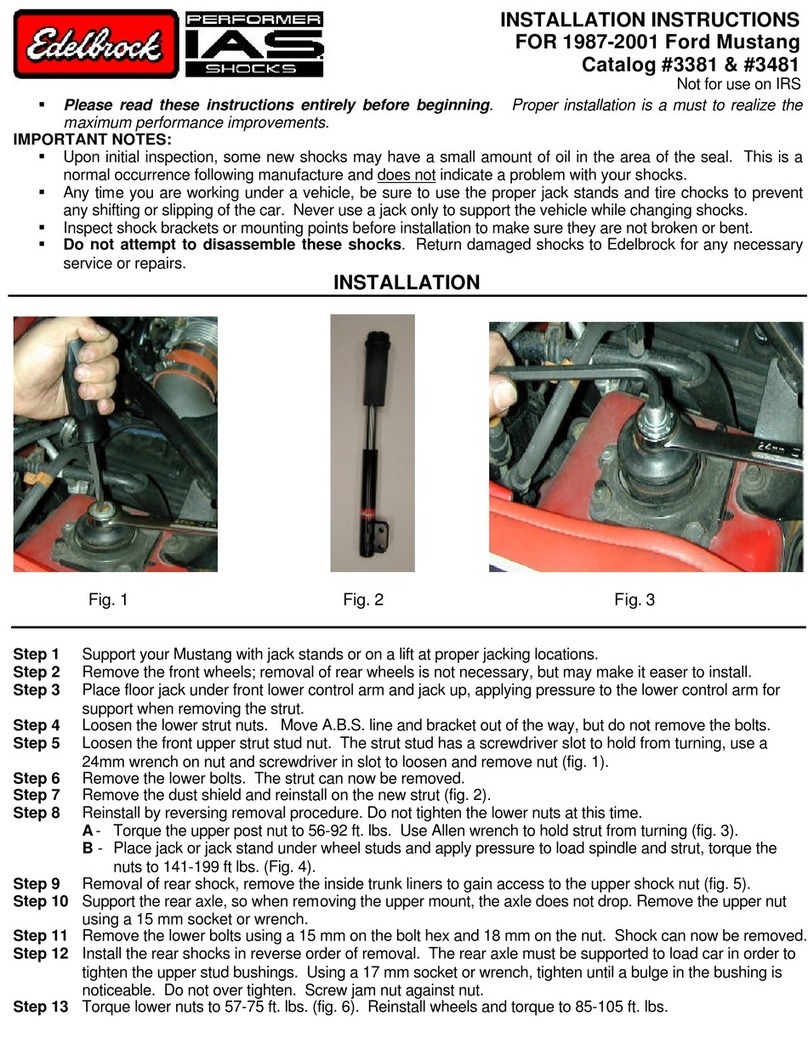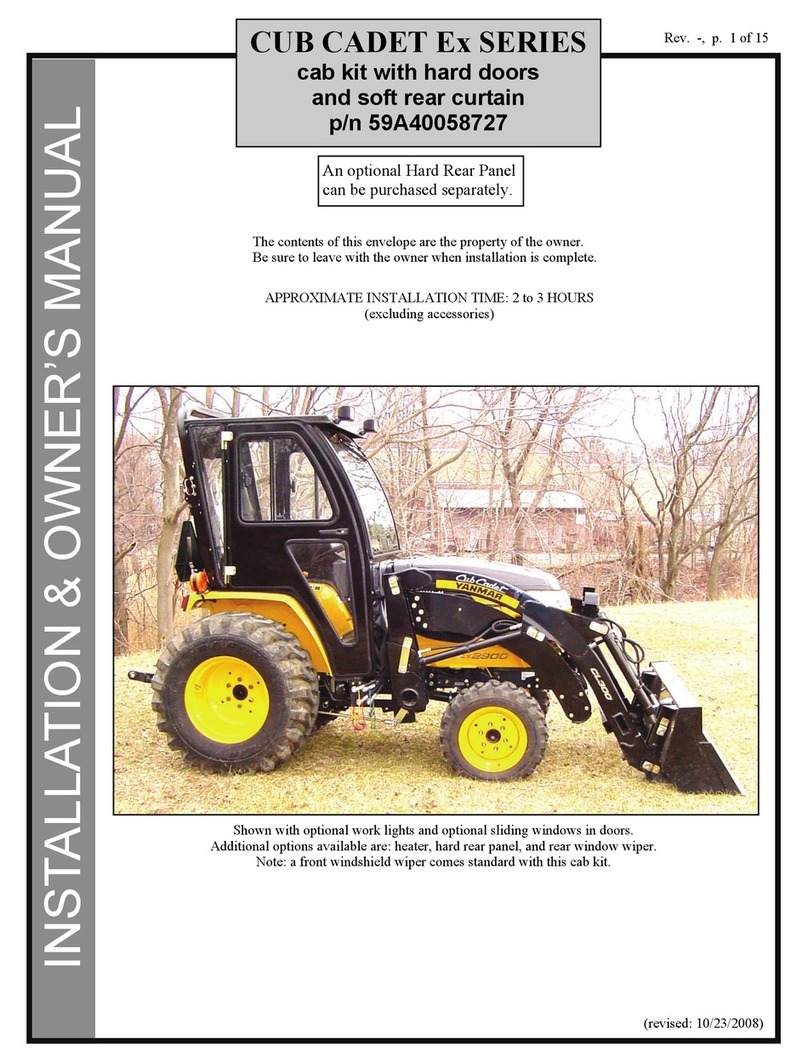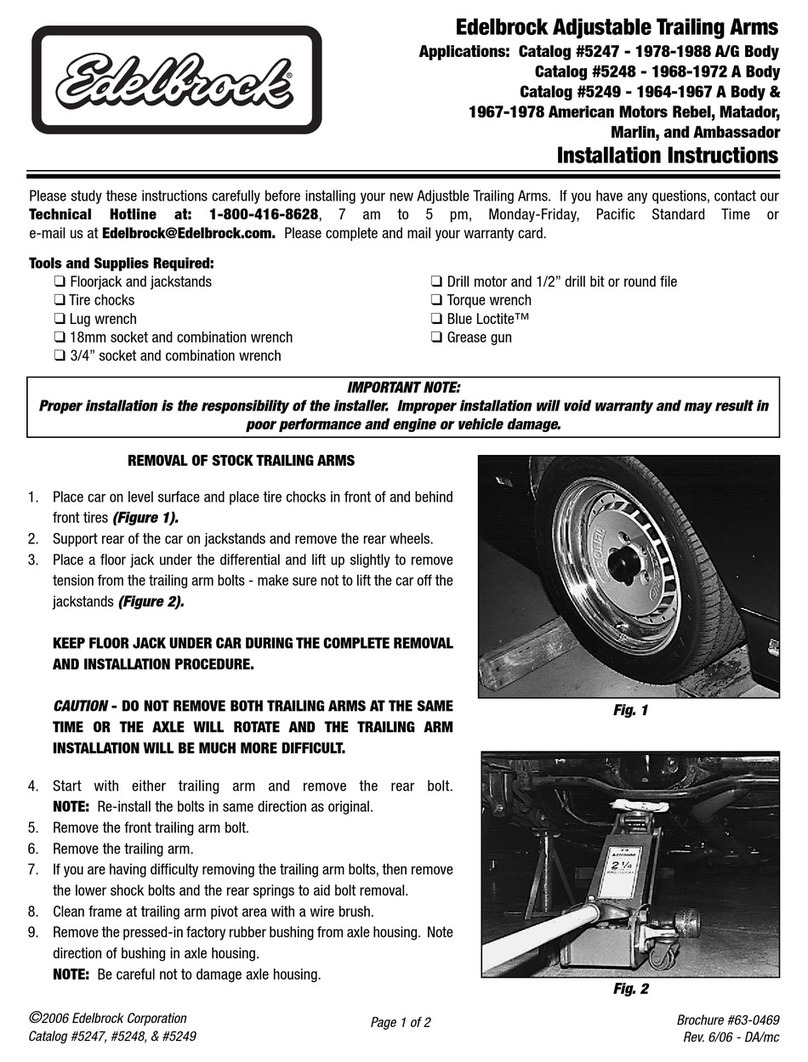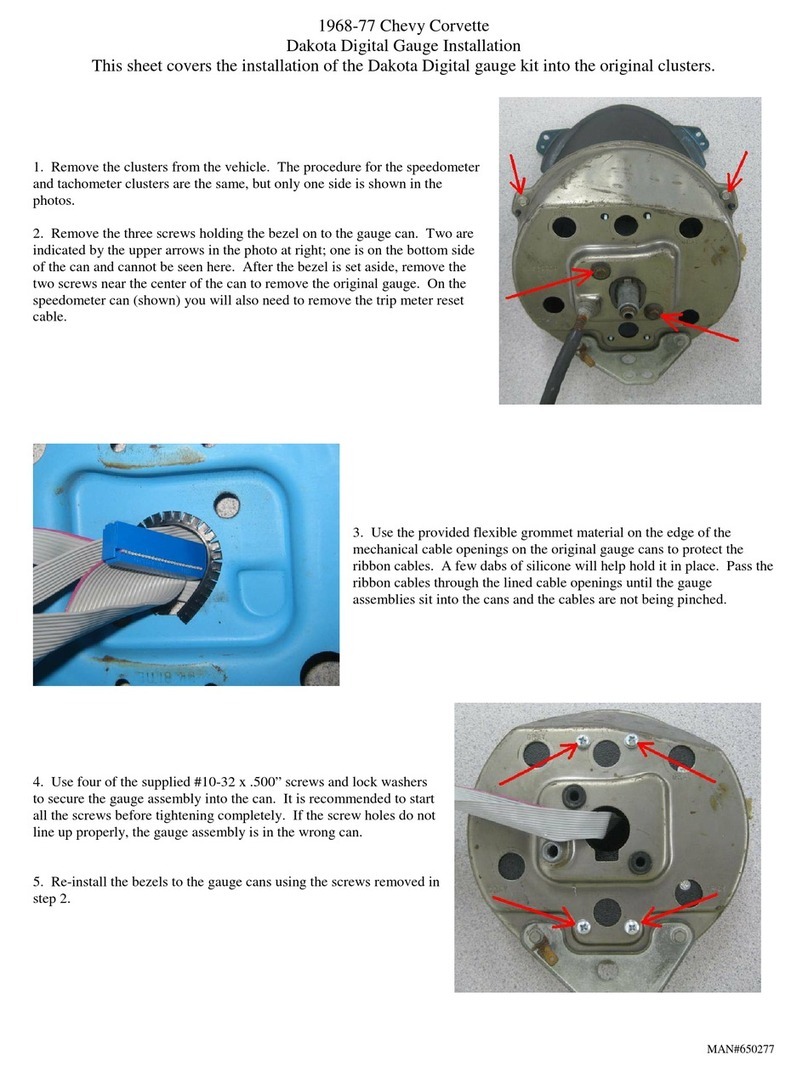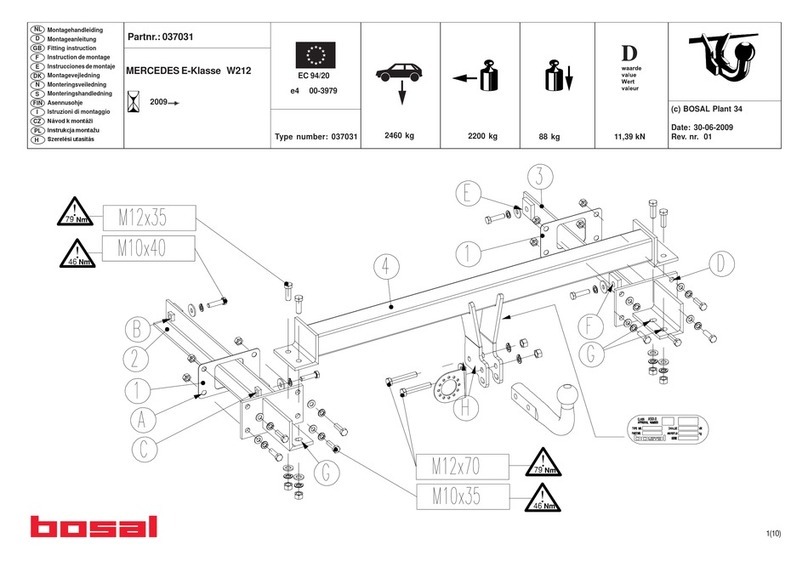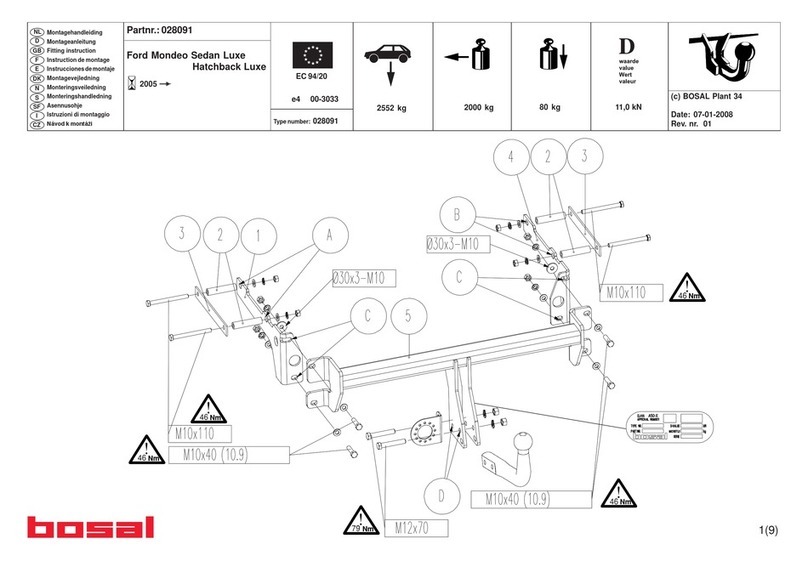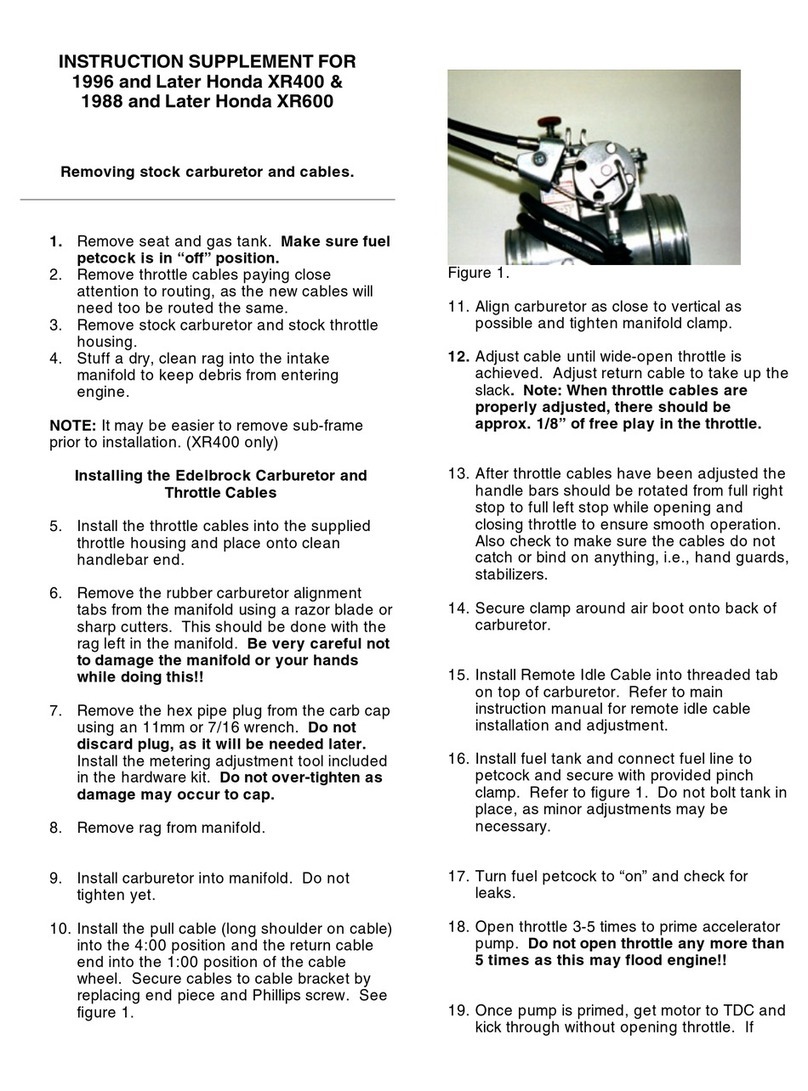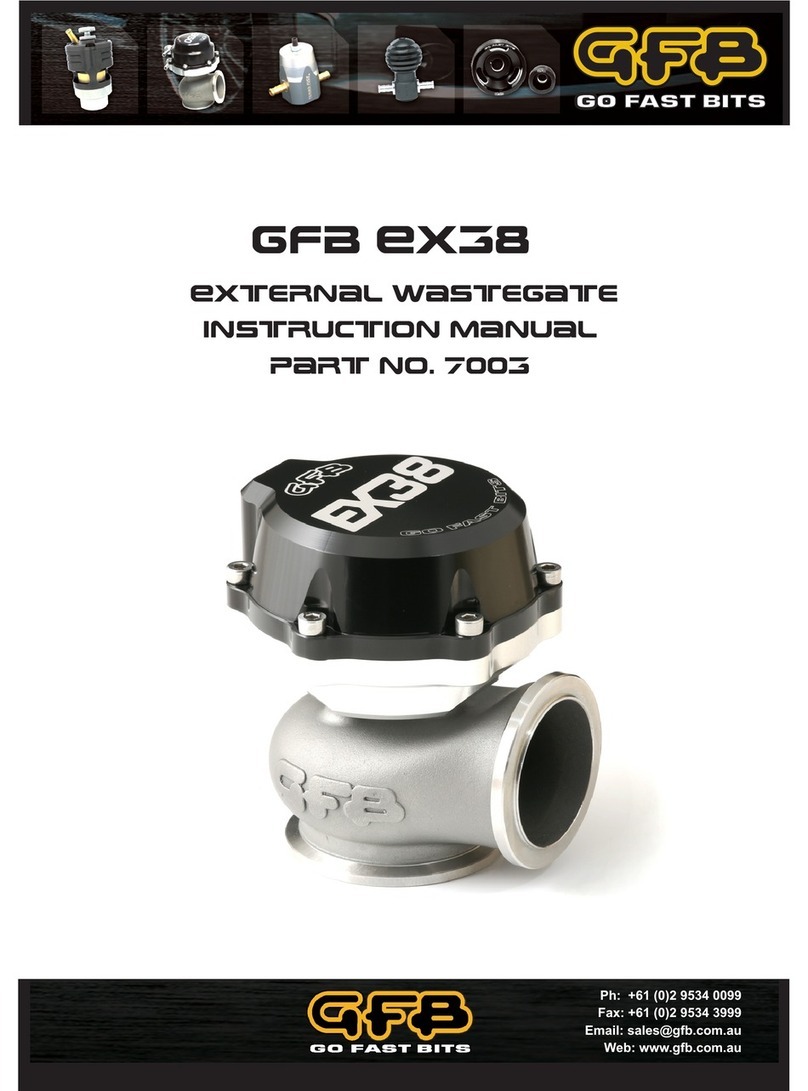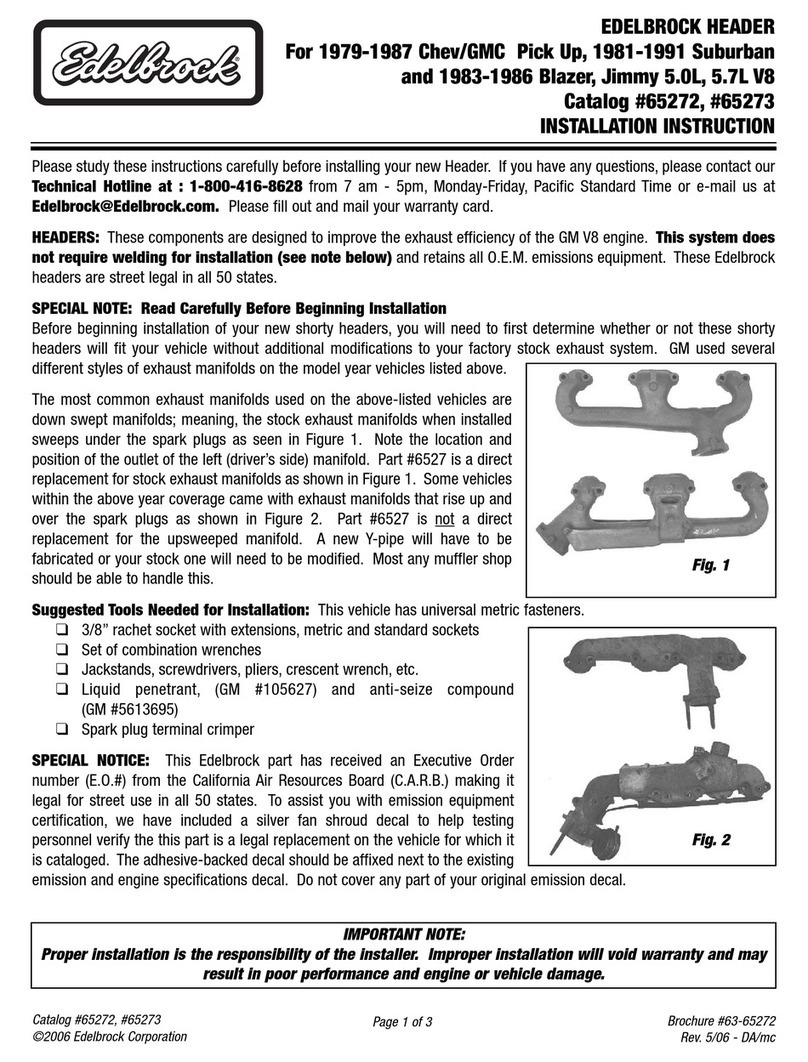
Rev. -, p. 9 of 19
Fig. 10.3 (view from right front side of tractor)
1” long bolt here
1” long bolt here
10. ROOF
10.1 If an optional hard rear panel was installed, the six
soft rear curtain snaps pre-assembled onto the back sur-
face of the roof can be left in place or removed and dis-
carded at the installer’s discretion.
10.2 Use a Phillips head screwdriver to punch a hole
through the headliner at all of the covered bolt hole loca-
tions (10 places). Punch holes from the inside out to
avoid having the headliner pull away from its glued sur-
face.
10.3 With assistance, install the roof oriented so the
reflectors are towards the rear of the tractor. If installing
an optional hard rear panel, the back of the roof must go
over the tops of the rear legs and rear panel so they are
contained. Per figure 10.3, use the following hardware in
the front corners: one 5/16-18 x 1” long button head bolt,
two steel washers, one plastic washer, and one locknut
(locknuts on the inside surface). Install the bolt through
the roof, windshield support, and mounting tab. Leave
loose.
10.4 The bolt hole locations over the left and right side
frames use the following hardware per side: two 5/16-18
x 3/4” long button head bolts, two steel washers, and two
plastic washers. These bolts are installed into factory
installed threaded inserts in the top of each side frame.
NOTE: use caution to avoid damaging the internal
threads on the factory installed threaded inserts. Leave
loose.
10.5 The remaining four holes use the following hard-
ware: four 5/16-18 x 3/4” long button head bolts, 8 steel
washers, 4 plastic washers, and 4 locknuts. Locknuts to
be on the inside surface. Note: the two middle rear bolts
are used for both hard or soft rear panels. When installing
the standard soft rear panel, the two middle rear bolts
serve only as weather plugs in the existing roof holes.
9. WINDSHIELD
9.1 See fig. 9.1. Have the following items ready: four
5/16-18 x 1 3/4” long flat head bolts, 4 steel washers, 4
locknuts, and 2 plastic spacer blocks. With assistance,
install the windshield hinges to the windshield support
with the two spacer blocks between the hinge and the
windshield support. Attach windshield latches to wind-
shield latch receivers on the cowl by squeezing tabs to
retract spring loaded pins. See fig. 9.1.1. Lift up on bot-
tom of windshield and close latches. Check alignment of
windshield with side frames and tighten hinge hardware.
CAUTION: hinges are plastic components. Do not
overtighten hardware. Torque to 7 foot-pounds max..
sandwich the
plastic spacer
block here
Fig. 9.1 (view from left front side of tractor)
latch receiver
Fig. 9.1.1 (view from right rear side of tractor)
